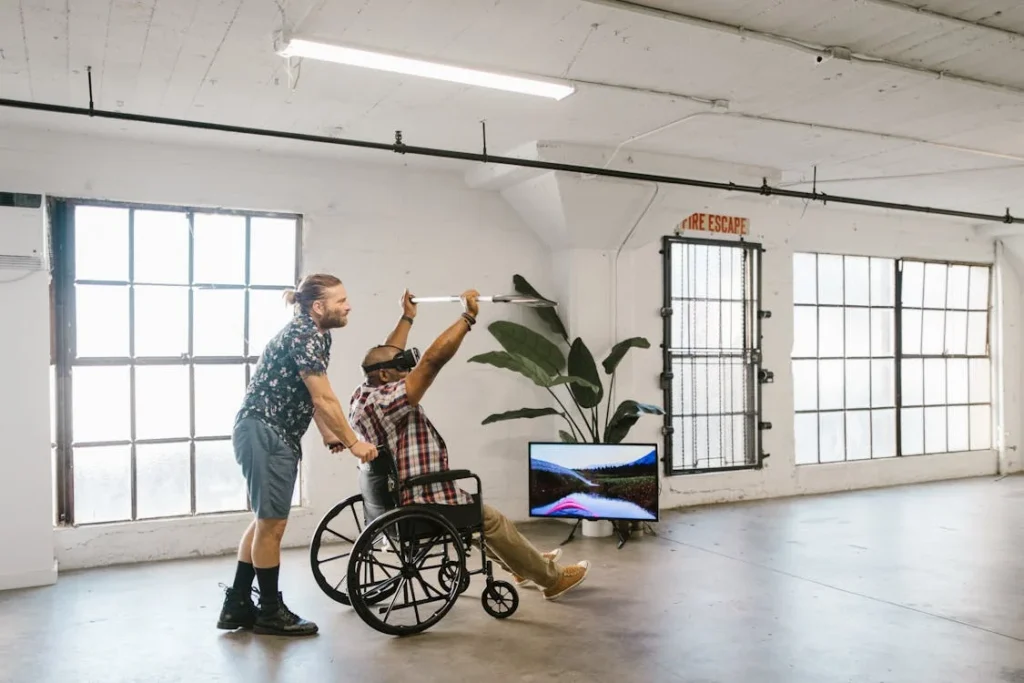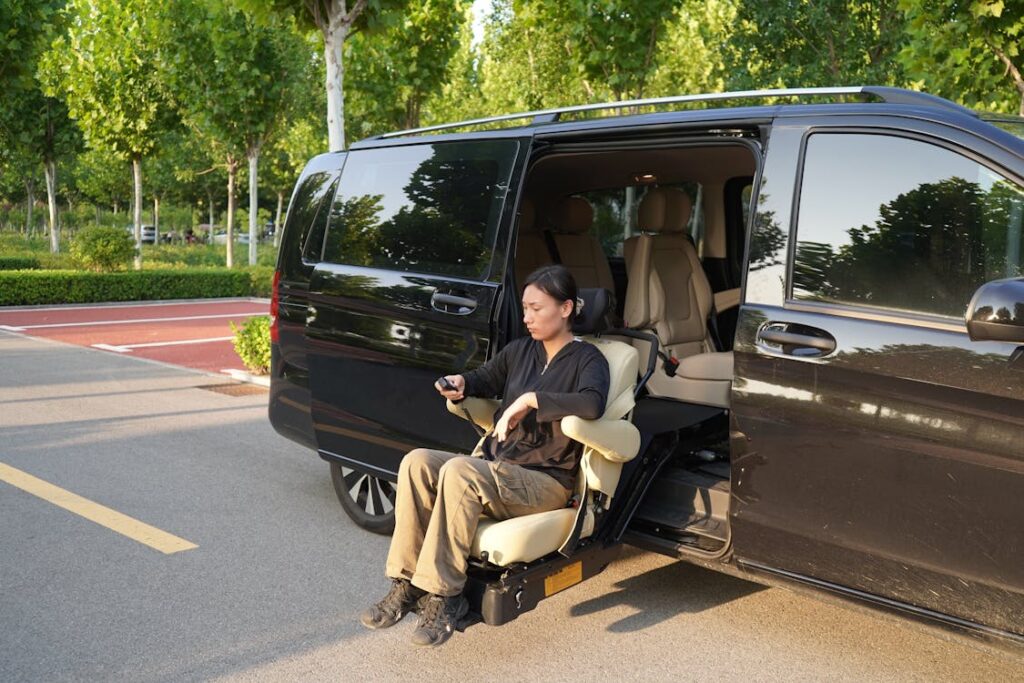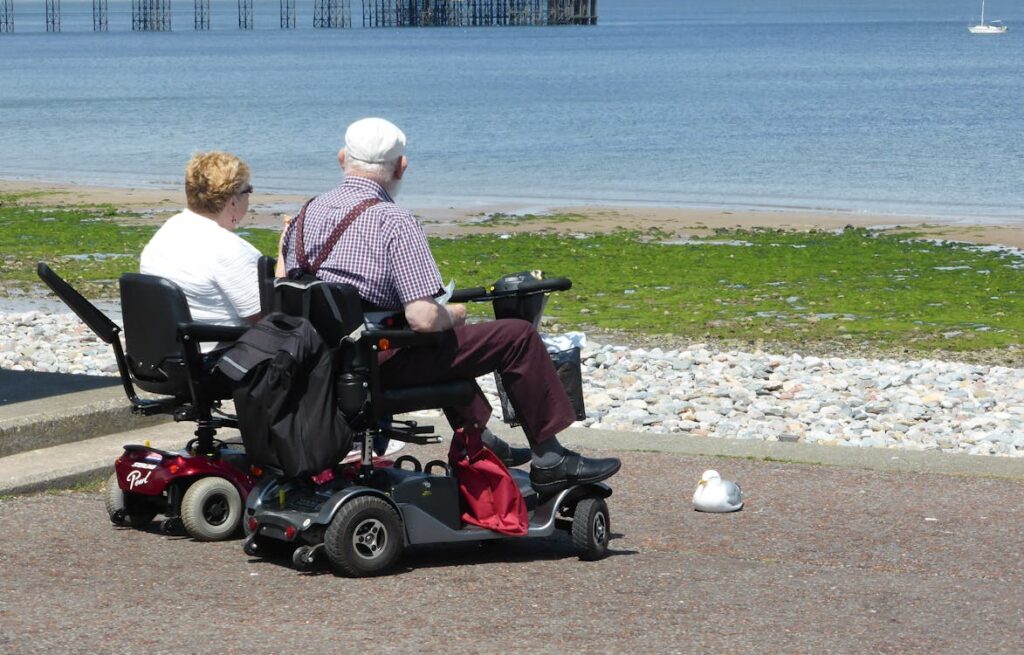Traveling should be for everyone. No one should feel left out just because they use a wheelchair. The world is becoming more inclusive, and many places now offer accessible experiences so that everyone can enjoy them. Whether you love exploring cities, relaxing by the beach, or visiting historical sites, there are destinations designed to make your trip smooth and stress-free.

Exploring the World Without Limits
Traveling with a wheelchair may require extra planning, but it should never limit your desire to explore.
Many destinations around the world have made significant strides in accessibility, ensuring that every traveler, regardless of mobility, can experience the joy of discovering new places.
From the smooth sidewalks of modern cities to specially designed pathways in natural wonders, options for accessible travel are growing.
The Beauty of Inclusive Cities
Cities that prioritize accessibility make travel effortless. Some of the best destinations have well-maintained sidewalks, step-free public transport, and attractions that accommodate wheelchairs.
One such city is Amsterdam, where trams, buses, and even boats are designed with ramps and reserved spaces for wheelchair users.
The city’s famous museums, such as the Rijksmuseum and the Van Gogh Museum, have elevators and accessible restrooms, allowing visitors to enjoy art and history without barriers.
London is another fantastic choice. The city’s iconic red buses and black cabs are wheelchair-friendly, and many underground stations have step-free access.
Tourist hotspots like the Tower of London, the British Museum, and Buckingham Palace all provide excellent accessibility, making it easy to explore without frustration.
Additionally, parks such as Hyde Park and Regent’s Park offer wide, flat paths where you can enjoy a peaceful afternoon surrounded by nature.
Sun, Sand, and Accessibility
Beach vacations are often seen as a challenge for wheelchair users, but many coastal destinations have adapted to be more inclusive.
In Barcelona, the beaches have wooden walkways that lead directly to the water, accessible showers, and even amphibious wheelchairs that allow visitors to enjoy the sea.
Lifeguards are also trained to assist those with mobility challenges, ensuring a safe and comfortable experience.
The Gold Coast in Australia is another excellent spot for accessible beach fun. The city has created several wheelchair-friendly coastal paths, and many beaches offer free beach wheelchairs.
The Surfers Paradise Esplanade is a perfect place to roll along the shore while enjoying the ocean breeze and lively atmosphere.
History and Culture Without Barriers
For history lovers, visiting ancient sites can sometimes be a concern, but many historical places have been modified to accommodate wheelchair users. Rome, a city filled with centuries-old landmarks, has worked hard to become more accessible.
The Colosseum, one of the world’s most famous historical sites, has ramps and elevators, allowing visitors to experience its grandeur without difficulty.
The Vatican Museums have also made accessibility a priority, offering lifts, wheelchair rentals, and step-free routes through their breathtaking galleries.
In the United States, Washington D.C. is an incredible destination for those interested in history and culture.
The National Mall, home to landmarks like the Lincoln Memorial and the Smithsonian museums, is fully accessible with smooth pathways and ramps.
Free admission to most museums adds to the appeal, allowing visitors to explore everything from space exploration to American history with ease.

Nature and Adventure Without Limits
Traveling with a wheelchair doesn’t mean you have to miss out on nature and adventure. Many outdoor destinations have adapted their trails, parks, and scenic routes to ensure accessibility for all visitors.
From breathtaking national parks to serene lakes and mountains, there are plenty of ways to enjoy the beauty of nature without barriers.
National Parks That Welcome Everyone
Several national parks around the world have taken steps to ensure wheelchair users can experience their stunning landscapes without difficulty.
Yosemite National Park in the United States is one such place. The park features paved trails with incredible views, including the famous Yosemite Falls Trail, which offers a fully accessible route to one of the park’s most beautiful waterfalls.
Shuttle buses are also wheelchair-friendly, making it easy to explore different areas without worrying about transportation.
Banff National Park in Canada is another great option. With its turquoise lakes, majestic mountains, and accessible trails, it provides an unforgettable experience for all visitors.
The Lake Louise shoreline walk is a smooth, well-maintained path that allows wheelchair users to take in the stunning scenery. Many of the park’s lodges and restaurants also provide step-free access, ensuring a comfortable stay.
Accessible Wildlife Experiences
Seeing wildlife up close is an unforgettable experience, and several destinations have made it possible for wheelchair users to enjoy these encounters without difficulty.
In South Africa, Kruger National Park offers accessible safari experiences. Specially designed safari vehicles allow wheelchair users to comfortably enjoy game drives while spotting elephants, lions, and giraffes in their natural habitat.
Many lodges in the park offer accessible rooms, ensuring a stress-free stay.
In Australia, the Great Barrier Reef has adapted tours for wheelchair users, offering accessible boats and snorkeling experiences with floating wheelchairs.
Visitors can explore the incredible marine life without limitations, making it one of the most inclusive nature experiences available.
Breathtaking Views Without Barriers
Some of the world’s most beautiful viewpoints have been made accessible, allowing everyone to enjoy the magic of panoramic landscapes.
The Grand Canyon in the United States has several wheelchair-friendly viewpoints, including Mather Point, which offers a stunning view of the canyon’s deep valleys and rugged cliffs. The park also provides accessible shuttles and restrooms, making visits more convenient.
Niagara Falls is another must-visit destination. The pathways along the falls are smooth and well-paved, providing excellent access to breathtaking views.
The famous “Journey Behind the Falls” attraction has ramps and elevators, allowing wheelchair users to experience the thundering waterfalls up close.
Boat tours such as the Hornblower Cruise also accommodate wheelchairs, making it easy to get a front-row view of this natural wonder.

Stress-Free Transportation and Accommodation
A great trip isn’t just about the destination—it’s also about how easy it is to get around and where you stay. The best wheelchair-friendly destinations ensure that transportation is smooth, accommodations are comfortable, and accessibility is never an afterthought.
Whether you’re navigating public transport, booking flights, or choosing a hotel, planning ahead can make all the difference in ensuring a stress-free travel experience.
Easy and Accessible Transportation
One of the biggest challenges for wheelchair users when traveling is getting from one place to another. Fortunately, many cities now offer well-designed public transport systems that make moving around effortless.
In Tokyo, one of the busiest cities in the world, accessibility has been taken seriously. Nearly all train stations have elevators and ramps, and the Shinkansen (bullet train) offers reserved wheelchair spaces.
Attendants are available to assist travelers, making journeys smooth and hassle-free. Similarly, Singapore’s MRT system is designed with step-free access, wide entrances, and priority seating, ensuring that wheelchair users can navigate the city with ease.
European cities like Vienna and Berlin also stand out for their accessible transportation. Vienna’s trams and buses are low-floor, meaning they have no steps to climb.
The city’s metro stations are equipped with elevators, and taxis with wheelchair ramps are widely available. In Berlin, nearly all buses and trains provide level boarding, making it one of the easiest cities in Europe to explore with a wheelchair.
For air travel, choosing the right airline can make a big difference. Many airlines now offer pre-boarding assistance, aisle chairs, and accessible restrooms on long-haul flights.
When booking a flight, it’s always a good idea to call ahead and inform the airline of any special requirements to ensure a smooth boarding process.
Finding the Right Accommodation
A comfortable and accessible place to stay is essential for a great trip. Many hotels around the world now offer wheelchair-friendly rooms, complete with roll-in showers, lower beds, and wide doorways.
However, not all hotels clearly advertise their accessibility features, so it’s always best to contact them directly before booking.
Some of the most wheelchair-friendly hotels can be found in destinations that prioritize accessibility. In Dubai, many luxury hotels have been designed with inclusivity in mind, offering spacious rooms, step-free entrances, and even accessible swimming pools.
The city’s top attractions, including the Burj Khalifa and Dubai Mall, have ramps and elevators, ensuring that travelers can explore without difficulty.
In the United States, cities like Orlando, which is home to Disney World, offer a wide range of accessible accommodations.
Disney resorts provide wheelchair-friendly rooms, and the theme parks themselves have rides that accommodate wheelchair users, making them a perfect choice for an inclusive vacation.
Booking platforms like Airbnb and Booking.com now allow users to filter their searches by accessibility features, making it easier to find a suitable stay.
Before booking, it’s always helpful to read reviews from other wheelchair users to get a better idea of how accessible a hotel or rental truly is.

Making the Most of Your Accessible Travel Experience
Choosing the right destination is only one part of planning a great trip. To truly enjoy a wheelchair-accessible vacation, it’s important to consider the details that will make your journey smooth and stress-free.
From planning ahead to embracing new experiences, there are many ways to ensure your trip is both enjoyable and hassle-free.
Planning Ahead for a Stress-Free Trip
A successful trip begins with good preparation. Researching a destination’s accessibility before you arrive can save time and prevent unexpected obstacles.
Checking online resources, travel blogs, and reviews from other wheelchair users can give you a clear picture of what to expect.
Many cities and tourist attractions provide official accessibility guides on their websites, outlining step-free routes, available elevators, and wheelchair-friendly facilities.
Packing smart is also important. Bringing any necessary medical supplies, a portable ramp, or spare wheelchair parts can prevent disruptions during your trip.
If you use a power wheelchair, checking whether your destination has accessible charging stations or repair shops can provide extra peace of mind.
It’s always a good idea to call ahead to hotels, restaurants, and attractions to confirm accessibility features. While many places claim to be wheelchair-friendly, speaking directly with staff can help clarify details like doorway widths, step-free entrances, and accessible restrooms.
Enjoying New Experiences Without Worry
One of the best parts of traveling is experiencing new activities, and wheelchair users should never feel limited in their options. Many adventure tours, cultural experiences, and entertainment venues have adapted to be more inclusive.
For those who enjoy the thrill of theme parks, destinations like Disneyland and Universal Studios provide priority access for wheelchair users, allowing visitors to enjoy rides and shows without long wait times.
Parks also offer wheelchair rentals, making it easier to move around large areas.
Exploring nature doesn’t have to be difficult, either. Many national parks and outdoor attractions offer adaptive experiences. In Costa Rica, for example, wheelchair users can explore the rainforest on specially designed trails that provide stunning views of waterfalls and wildlife.
Similarly, in Norway, visitors can enjoy the Northern Lights from accessible glass igloos, allowing them to take in the breathtaking scenery in total comfort.
Connecting With Other Travelers
Traveling is about more than just seeing new places—it’s about meeting people and sharing experiences. Connecting with other wheelchair users who love to travel can provide inspiration and valuable advice.
Social media groups, online forums, and travel communities dedicated to accessible tourism can offer first-hand recommendations on the best destinations, hotels, and attractions.
Many travelers with disabilities have started their own blogs and YouTube channels to document their experiences. Following their journeys can help you discover new places and gain insight into navigating different destinations with ease.

Dining and Entertainment Without Barriers
Food and entertainment are some of the biggest joys of traveling, and accessibility should never limit these experiences.
Whether you’re dining at a Michelin-star restaurant, enjoying a live show, or exploring a vibrant nightlife scene, the world is becoming more inclusive for wheelchair users.
Accessible Dining Experiences
Finding a great place to eat is a huge part of travel, and many cities now have wheelchair-friendly restaurants that ensure a comfortable and enjoyable experience.
In Paris, many top restaurants, including those in the historic districts, have introduced step-free entrances and accessible seating to welcome all guests. Some even offer Braille menus and adjustable tables, making dining more inclusive.
In the United States, cities like New York and Los Angeles have an increasing number of fully accessible restaurants. Many food courts, cafes, and fine-dining establishments ensure that guests can move around easily, with staff trained to assist when needed.
If you love street food, Singapore is a fantastic destination. Hawker centers, known for their diverse and affordable food options, have ramps, wide aisles, and wheelchair-friendly seating areas.
When dining out, it’s always a good idea to check restaurant websites or call ahead to confirm accessibility features. Apps like AccessNow and Wheelmap help travelers find wheelchair-friendly dining spots based on real user reviews.
Enjoying Live Entertainment and Cultural Events
Experiencing local culture through live performances, theater, and music events is one of the best ways to connect with a destination. Fortunately, many concert halls, opera houses, and theaters now offer accessible seating and services for wheelchair users.
London’s West End and New York’s Broadway both provide excellent accessibility, with designated seating, step-free entrances, and assistive listening devices for those with hearing impairments.
Staff members are trained to assist with seating arrangements, ensuring that every guest enjoys the show comfortably.
Music lovers will find that major concert venues, such as the O2 Arena in London and Sydney Opera House, offer accessible seating areas with fantastic views.
Festivals like Glastonbury and Coachella have also made strides in accessibility by providing wheelchair-friendly platforms, accessible restrooms, and dedicated assistance teams to help guests navigate the event.
If you enjoy visiting museums and art galleries, cities like Berlin, Washington D.C., and Amsterdam are great choices.
These destinations are home to some of the most accessible museums in the world, with ramps, elevators, and guided tours specifically designed for wheelchair users.
Many even provide touch tours, allowing visually impaired visitors to experience art and history through tactile exploration.
Theme Parks and Family-Friendly Attractions
Traveling with family or seeking a fun-filled adventure? Many of the world’s top theme parks and attractions are now fully accessible, ensuring that everyone can enjoy the excitement without limitations.
Theme Parks That Prioritize Accessibility
Disney parks around the world, including those in Orlando, Paris, and Tokyo, are some of the best examples of accessible entertainment. They offer step-free access to most attractions, priority boarding for rides, and wheelchair-friendly transportation within the parks.
Special wristbands allow guests with mobility challenges to access rides more easily, reducing wait times and ensuring a seamless experience.
Universal Studios, located in several cities worldwide, also prioritizes accessibility. Many of its thrill rides have accessible ride vehicles, and the parks offer electric convenience vehicles (ECVs) for rental, making it easier for visitors to explore without exhaustion.
Zoos and Aquariums for All Visitors
For those who love animals, zoos and aquariums provide fantastic wheelchair-accessible experiences. The San Diego Zoo, one of the most famous in the world, has well-paved paths, ramps, and shuttle services designed for easy navigation.
Similarly, the Monterey Bay Aquarium in California offers spacious viewing areas, elevators, and tactile exhibits for a more interactive experience.
Singapore’s Night Safari is another excellent destination. It provides step-free access to exhibits, wheelchair-friendly trams, and a chance to see nocturnal animals up close in a naturalistic setting.

Shopping Without Limitations
For travelers who love to shop, many cities have made retail experiences more inclusive. Whether you’re browsing designer boutiques, exploring local markets, or shopping in massive malls, accessibility is becoming a priority.
Wheelchair-Friendly Shopping Malls
Dubai is home to some of the most accessible shopping malls in the world. The Dubai Mall, one of the largest shopping centers globally, features smooth flooring, elevators, and step-free entrances.
Wheelchairs are available for rent, and customer service teams are trained to assist shoppers with mobility challenges.
In London, Harrods and Westfield Shopping Centre have spacious aisles, accessible fitting rooms, and step-free access to every floor. Staff members are always available to help with purchases or carry bags, ensuring a smooth shopping experience.
Tokyo’s Ginza district, known for its luxury shopping, has several department stores with wide aisles and accessible elevators, making it easy to explore high-end fashion and unique souvenirs.
Exploring Local Markets
Street markets and bazaars can sometimes be challenging for wheelchair users, but some destinations have made efforts to improve accessibility.
In Bangkok, the Chatuchak Market has widened its pathways and added accessible restrooms, making it easier for all visitors to explore.
In Barcelona, the famous La Boqueria market offers smooth, paved surfaces, and vendors are happy to accommodate wheelchair users.
Many of Europe’s Christmas markets, especially in Germany, have begun adding ramps and dedicated accessible seating areas for visitors to enjoy festive treats and decorations.
Relaxing in Accessible Resorts and Spas
Vacations are not just about adventure and sightseeing—sometimes, the best trips are the ones where you can unwind and relax.
Many resorts and spas around the world have recognized the importance of accessibility, ensuring that all guests can enjoy luxurious and stress-free stays.
Whether it’s an all-inclusive beach resort, a mountain retreat, or a wellness spa, there are plenty of options designed with wheelchair users in mind.
Luxury Beach Resorts That Welcome Everyone
The Maldives, known for its stunning overwater bungalows and crystal-clear waters, might seem like an inaccessible destination at first, but several luxury resorts have adapted to welcome wheelchair users.
Many resorts offer step-free access to rooms, accessible pools with hoists, and even beach wheelchairs that allow guests to roll right up to the water’s edge. Some even provide accessible scuba diving programs, ensuring that all visitors can explore the vibrant marine life.
In the Caribbean, destinations like Jamaica and the Dominican Republic have multiple all-inclusive resorts that focus on accessibility. Resorts such as Sandals and Beaches provide roll-in showers, beach access mats, and trained staff to assist guests with mobility needs.
These resorts offer a fully inclusive experience where food, drinks, and activities are all part of the stay, making it easy to relax without worrying about logistics.
Mountain Retreats and Nature Lodges
For those who prefer cooler climates and mountain scenery, accessible lodges in places like Switzerland, Canada, and New Zealand provide breathtaking views with full wheelchair access.
In Switzerland, resorts in Zermatt and Interlaken offer adapted cable cars that take visitors up to snowy peaks, providing an unforgettable alpine experience.
Many mountain lodges also have accessible balconies, allowing guests to enjoy panoramic views of nature right from their rooms.
In Canada, Banff and Whistler have ski resorts that cater to wheelchair users, offering adaptive skiing programs where trained instructors help guests navigate the slopes using specialized equipment.
These resorts also have step-free paths leading to scenic viewpoints, allowing visitors to take in the beauty of the mountains without limitations.
Relaxing in Accessible Spas
Spas and wellness retreats are meant to be a place of relaxation for everyone, and many high-end spas now offer accessible treatment rooms, massage tables that adjust in height, and step-free entrances to pools and saunas.
In Thailand, several wellness resorts provide accessible meditation retreats, hydrotherapy pools, and specially designed yoga sessions for individuals with mobility challenges.
Thermal baths in places like Iceland’s Blue Lagoon and Budapest’s famous spa houses have been adapted for wheelchair users, with smooth pathways, accessible showers, and staff assistance for entering and exiting the warm mineral-rich waters.
These destinations provide both physical relaxation and health benefits, making them perfect for a rejuvenating escape.

Cruises: The Ultimate Hassle-Free Travel Experience
For those looking for a truly stress-free way to travel, cruises offer one of the most wheelchair-friendly vacation experiences available.
Modern cruise ships are designed with accessibility in mind, providing spacious staterooms, step-free decks, and accessible excursions at ports of call around the world.
Why Cruises Are a Great Choice
One of the biggest advantages of cruising is that everything you need is onboard. There’s no need to worry about constantly changing hotels, navigating unfamiliar streets, or dealing with complicated transportation.
Many cruise lines, including Royal Caribbean, Norwegian Cruise Line, and Disney Cruise Line, offer fully accessible cabins with roll-in showers, lowered sinks, and ample space for wheelchair maneuverability.
Public areas such as restaurants, theaters, and swimming pools are also designed to be accessible. Some ships even feature lifts that lower guests into the pool, allowing everyone to enjoy the amenities. Elevators are wide and spacious, ensuring smooth movement between decks.
Accessible Shore Excursions
One concern for wheelchair users on cruises is accessibility at port stops, but many cruise lines now offer excursions specifically designed for travelers with mobility challenges.
In destinations like Alaska, accessible tours allow guests to see glaciers up close, take scenic train rides, or go whale watching without barriers.
In Mediterranean destinations like Greece and Italy, guided accessible tours provide step-free routes through historic sites, ensuring that guests can explore ancient ruins, beautiful coastal towns, and charming marketplaces without obstacles.
Caribbean cruises also offer accessible beach excursions with wooden pathways leading to the shore, making it easy to enjoy the sand and sea.
Traveling with Confidence and Independence
Traveling with a wheelchair does require extra planning, but with the right mindset and resources, the world is full of incredible experiences waiting to be explored.
Confidence comes from knowing that accessibility is improving every year, and more destinations are making sure that all travelers, regardless of mobility, can enjoy their trips to the fullest.
Overcoming Travel Challenges
While accessibility has improved in many places, unexpected obstacles can still arise. This is why it’s important to stay flexible and approach travel with a positive attitude.
If a hotel, restaurant, or attraction doesn’t meet accessibility expectations, having a backup plan can help keep the trip enjoyable.
Apps like Google Maps, AccessNow, and Wheelmap can provide real-time information on accessible routes and venues, helping to navigate unfamiliar locations.
Bringing a travel companion can also make certain situations easier, but solo travel is absolutely possible for wheelchair users. Many destinations now offer personal travel assistants or mobility aid services that can be arranged in advance to provide extra support.
Finding Inspiration in Other Travelers
Many wheelchair users have shared their experiences through blogs, vlogs, and social media, offering valuable insights and motivation. Following these stories can provide great tips and encouragement for planning your own trips.
Some travelers even document the challenges they face along the way, helping others prepare for potential obstacles.
Traveling is about creating unforgettable memories, and accessibility should never be a reason to hold back.
Whether it’s exploring a bustling city, relaxing on a tropical beach, discovering ancient history, or embarking on an adventure in nature, the world is becoming more open and inclusive for wheelchair users.
Conclusion
Traveling with a wheelchair is no longer as difficult as it once was. With the world becoming more accessible, incredible experiences are within reach—whether you dream of exploring vibrant cities, relaxing on pristine beaches, or immersing yourself in history and nature. From wheelchair-friendly public transport to inclusive resorts, theme parks, and adventure tours, more destinations are ensuring that every traveler can explore with comfort and ease.
Planning ahead, choosing the right accommodations, and staying informed about accessibility features can make all the difference in having a smooth and stress-free trip. The key is to embrace the journey with confidence, knowing that many places are ready to welcome you with open arms.
Every traveler deserves the freedom to see the world, and wheelchair users are no exception. With so many inclusive destinations waiting to be explored, the only question left is—where will you go next?
If you’re looking for mobility solutions that enhance your independence, Robobionics is here to support you. Learn more about our prosthetic solutions and adaptive technologies to make everyday life, including travel, easier and more enjoyable. Visit our website today!



